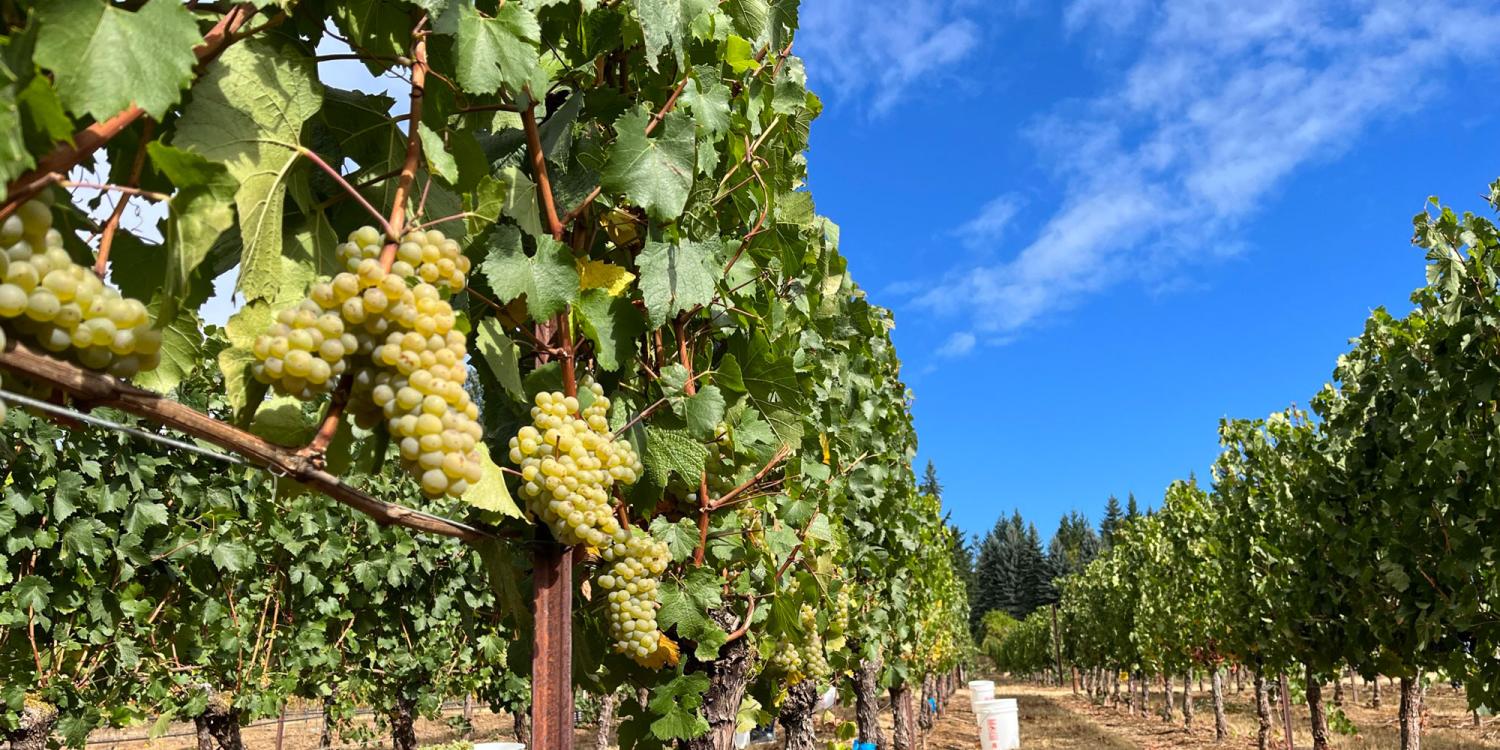
Wine grape vineyards are highly susceptible to powdery mildew and botrytis bunch rot, two fungal diseases that can destroy the grape crop and result in unsellable wine if not prevented and managed appropriately. One non-chemical management practice that was found to reduce those diseases is removal of leaves in the cluster zone of the vine.
Oregon State University Extension Service viticulturalist Patty Skinkis conducted research in various Oregon vineyard trials from 2009-2019 that explored the proper timing and intensity of cluster zone leaf removal and the impacts on disease management and fruit quality.
The commercial vineyard-to-winery trial shows that leaf removal, whether at the single-sided or double-sided treatment had no powdery mildew or botrytis. Further, an increasing number of wineries are choosing to farm their vineyards organically or using biodynamic methods, which reduce the choices of approved fungicides that can be used. The study showed that leaf removal becomes a critical cultural practice to prevent disease development in combination with fungicides.
Although these results were shared, many winemakers in Oregon had been choosing to shade their fruit rather than pull leaves in recent years. The shift away from leaf removal was precipitated, in part, by the concern about hot-dry seasons and the impacts of climate change as well as the thought that white wine grapes shouldn’t be exposed to the sun.
In response, an educational event was presented during the 2024 Oregon Wine Symposium to help more winemakers understand the importance of cluster zone leaf removal and to learn the proper timing and intensity of leaf removal required for white wine grapes. The event featured a technical tasting of Chardonnay wines that were produced from a field demonstration trial conducted by Lingua Franca, a commercial vineyard and winery located in Oregon's Eola-Amity Hills American Viticultural Area.
OSU Extension’s viticulture team used leaf removal treatments of single-sided or double-sided leaf removal at fruit set of berry development and compared this to a no-leaf pull control. Wines were made at harvest and processed using commercial standard practices. A presentation of the project background, design, field data and wine data were shared with the audience at the symposium.
Participants at the event were given three wines to taste with their vineyard leaf removal treatment identities masked. Polls were conducted to allow participants to rate the wines and to provide sensory responses. The wines were rated as fruity and bright for the single-side leaf pulling treatment, more floral/round/grassy for the control, and tropical for the double-sided leaf pulling treatment.
The audience was also asked if they would adopt new practices in the coming season and vintage. When the audience was asked whether they would adopt different leaf removal practices in the next season, 71% indicated that they would do the single-sided leaf removal practice early. Fifteen percent indicated that they would remove both sides of leaves. Only 5% indicated that they would not pull leaves.
Because many winemakers are apprehensive to conduct leaf removal in white wine grapes, the results of this event were helpful to showcase the successful use of early season leaf removal to improve disease management and grape/wine quality in a vineyard that is organic, and a winery targeting premium wine production.